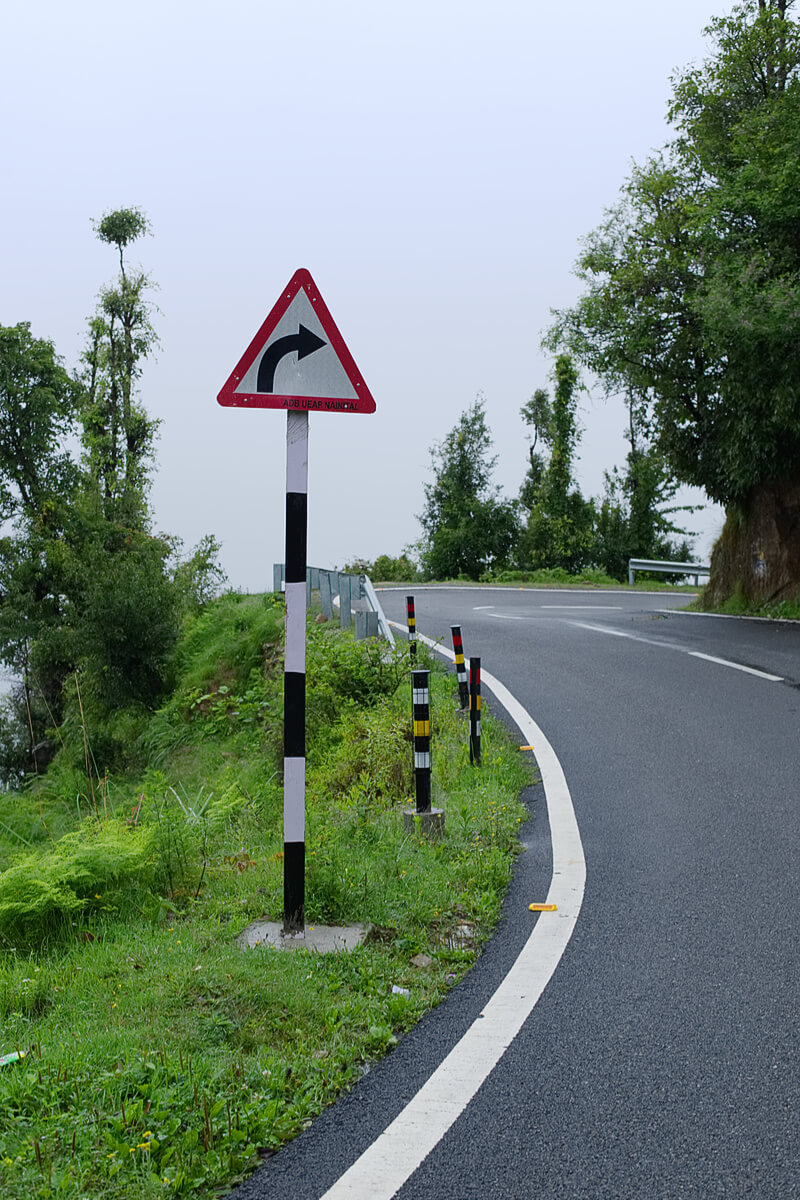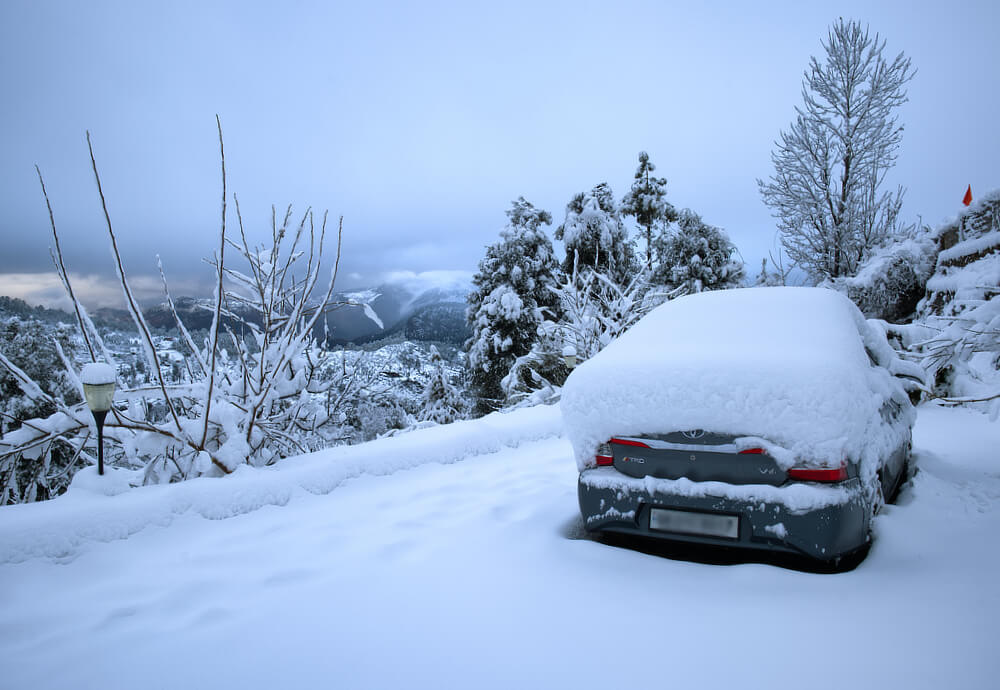Does the idea of driving on hill roads excite you? Are you still not confident in the driving skills required?

Regardless of whether you have never driven on the hill roads earlier or you are a seasoned driver who spends most of the time driving on these roads, here is something you should read before planning your next hill drive.
Hills have their own charm when it comes to driving. Winding roads with their twists and turns are full of surprises. Sometimes there are deep valleys and tall mountains that can be seen and sometimes there are dense forests surrounding the road. If you enjoy driving, then go slow and soak yourself in the natural beauty of these hills.
Here are some pointers for a safe drive –
- Drive slow and do not overtake if you can’t see the empty road up to a considerable distance.
- On narrow stretches of road, give way to vehicles that are climbing. Seasoned hill drivers tend to park their vehicles wherever the road is a little broad and let the climbing vehicles pass.
- Blowing horn is frowned upon, but on blind turns, it helps to let the other drivers know that you are approaching the turn. So do honk before taking a blind turn.
- You should also be able to hear the horns from other vehicles, so switch off that music and if the weather permits, open the window at least a little.
- During night time, always lower/dip your headlight, letting the person from the other side see the road.
- While going downhill, especially in the daytime, let the car roll in whatever gear seems to give you stable speed without depending on excessive braking. A rule of thumb is to use the same gear as you would while climbing on such a road. Also remember that if you have to continuously brake for more than 15-20 seconds, then you need to shift to a lower gear. Never let the car move in neutral. This is called ‘Engine Braking’. If your vehicle has ‘Hill Descent Control’, use that also along with Engine Braking.
- While climbing up, if you have to stop, use the handbrake when the vehicle has come to halt. It prevents the car from rolling back when you resume your climb.
- When parking on an incline – Engage your hand-brake, put the car in gear, turn the front wheels to an angle facing a wall or climb and use wheel chocks (or small rocks or bricks).
- Another interesting thing to remember – The bridges on hills have low load-bearing capacity. So, even if the bridge has just enough place for two vehicles from opposite directions to pass, wait, and cross the bridge when traffic from the other side is not there. Also to reduce the weight on the bridge, increase the distance between yourself and the vehicle in front while crossing the bridge.
Some things to be careful of –
- Big vehicles like buses and trucks have a longer turning radius and a long vehicle body as well. So, on difficult turns, they may come to the other side of the road unexpectedly. This is very common on ‘U-turns’. Do be careful especially when you are turning towards the right, the opposite vehicle may not be in a position to take a sharp turn and keep in its lane.
- Taxi drivers in general drive very fast. Here they do not believe in saving fuel but instead, try to save time so that they can make multiple trips. They have stickers claiming that they stick to their lanes but don’t ever trust these stickers.
- Occasionally, drivers use turning indicators to let the other vehicles know that it is safe to overtake them. It takes some experience to understand the intention of the driver – whether it is to turn or to let you overtake!
- Sometimes drivers of the oncoming traffic may use the indicators to say ‘thank you’ when you have stopped to give them the way on a climb or sometimes even to point out that there’s enough space and you too can pass.
Common Sense (That is commonly uncommon)
- If you have a sun-roof don’t let anyone stand up through it while you drive. We have seen enough kids with foreign body injuries to the eyes because of this.
- Don’t wave your hands outside the windows for no reason. It can misguide other vehicles.
- Don’t throw plastic waste out of windows while driving (We are sad that we actually had to write this point too.)

Rains, fog, and Snow
- Drive slow.
- Use a low beam. It will not light up the water droplets in front of you. Using high-beam in such weather conditions can be blinding to the driver itself.
- In dense fog, use parking lights, fog lights, or even low beam. Don’t switch on all the indicators as a way of cautioning. Doing so takes away your control of indicators and makes it difficult to indicate when you are planning a turn. Switch on all the indicators (both side indicators) only if you have stopped your car and want to caution other drivers when the visibility is poor.
- Learn to brake before a turn too rather than only while the car is on a turn. This will provide a better road-grip.
- If the tire-treads are good, there’s no need for snow chains in the little snow this region usually gets. If they are not good, change the tires before planning your vacation on the hills.
- Be careful of ice that forms from melted snow that freezes up during the cold nights. This is super slippery. (Read up more about it below)
- If your car has been standing parked for a long time on a cold day, let the engine warm up a little (by idling). Don’t try to speed up the warming process by pressing on the accelerator or by putting any load on the engine.
- If there is snow on the car, wipe the roof also apart from the windshield. Snow on the roof, if not removed, has a tendency to slide up front on the windscreen while braking.

On slippery roads (with ice)
- Drive slow (this goes without saying)
- Do not take sharp turns at high speed. Usually, the recommendation is to drive at the speed of people walking.
- Drive using second gear when you should be using the first gear. Go slow but use high gear. This reduces the torque and thus the chance for a wheel-spin.
- If the road is icy, the wheels may not provide a good enough grip. Use the accelerator in quick short steps, providing just enough gas, so as to keep the car moving.
- On icy roads, use brakes as always if and only if your car has ABS. The brake pedal will tend to fight back and the braking will be jerky. That is ABS at work. If you don’t have ABS don’t ever slam the brakes. Instead, use brisk pumping-like action (which can be very very tricky if you are not used to it). Our sincere request – If your vehicle doesn’t have ABS, don’t plan a trip to the hills when the roads may be icy. In fact, don’t take a taxi/cab without ABS for such trips, even if the driver has experience in hill driving.
- If the car happens to go into a skid, don’t panic. Turn the steering towards the direction the car is skidding to. This is to gain back traction. Shifting to neutral helps.
- An AWD vehicle will give better traction on slippery roads but don’t be fooled into over-confidence with that. A 4WD will also let you drive but cornering may be difficult.
- Best plan – travel when the sun is up. This will give time to the government people to clear the road and also some of the ice will melt away.
- Though usually, it is good to give way to the vehicle going uphill, when the roads are full of snow, give way to the vehicles from the opposite side whenever you approach a place where two vehicles can pass. Don’t wait for the other vehicle to stop for you. The driver may not be in a position to brake or the road might not be wide enough to let you pass.
And Remember
- Even if you are extra careful, the other vehicles may not be. So keep that in mind !
The roads are not icy or slippery for the most part of the year. Driving in the hills is fun. Get in touch with us and we will guide you on the best route and how to reach us comfortably.
If you have made reservations at our cottages and want to avail taxi service, let us know. We can arrange good quality vehicles with trained drivers for you. The charges for these will have to be paid directly to the taxi service, except when you have booked a complete holiday with us which includes local travel as well.
